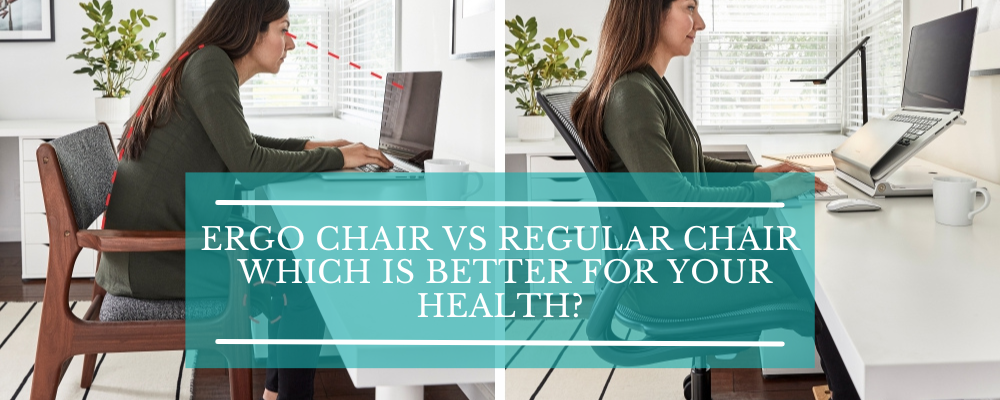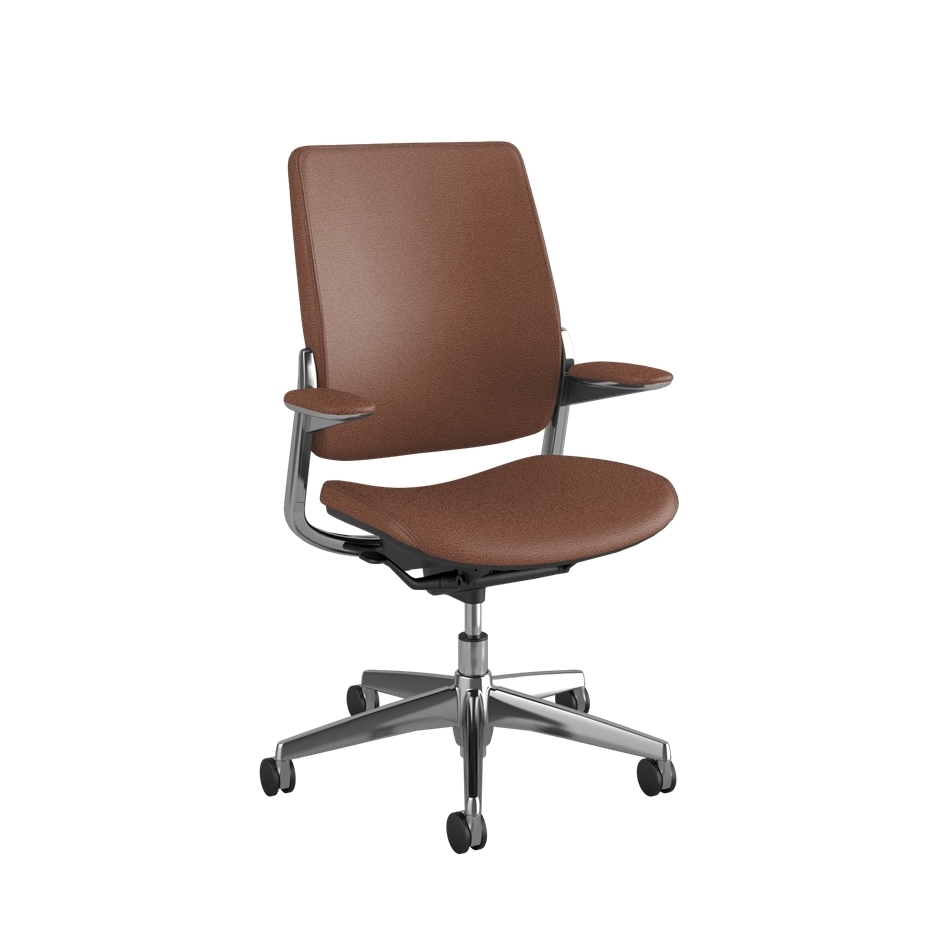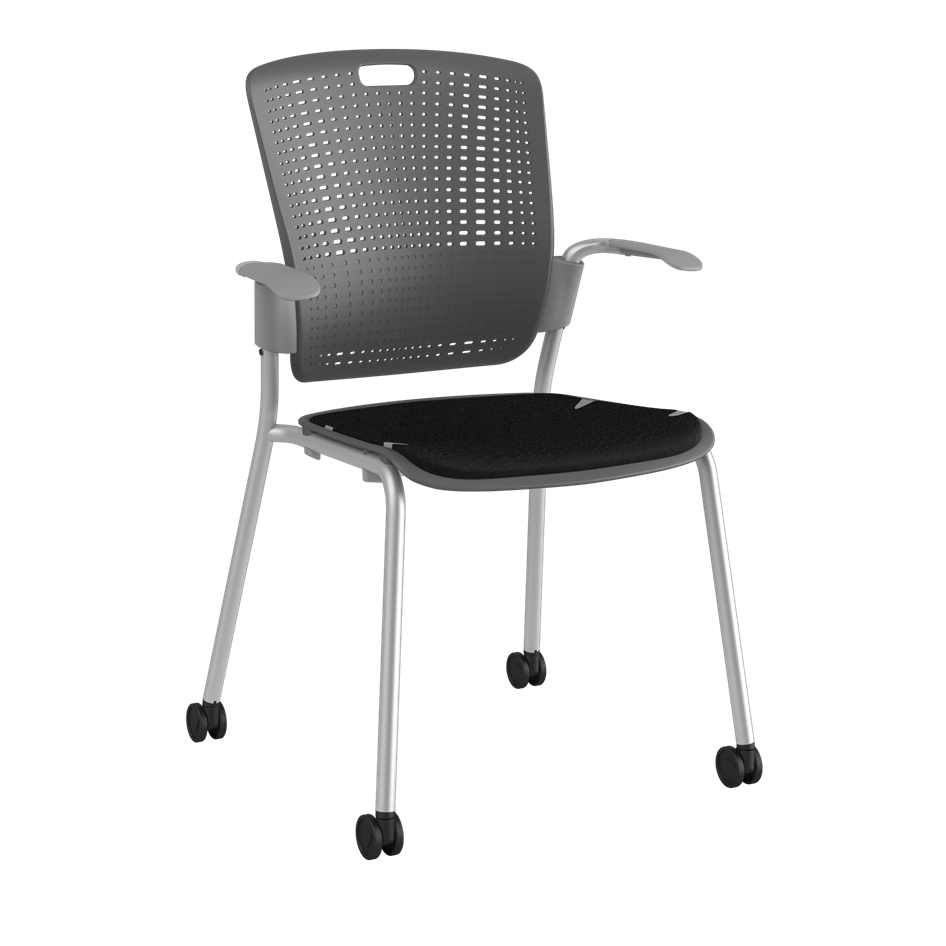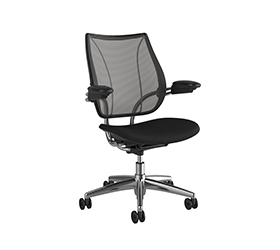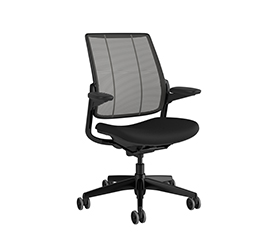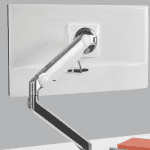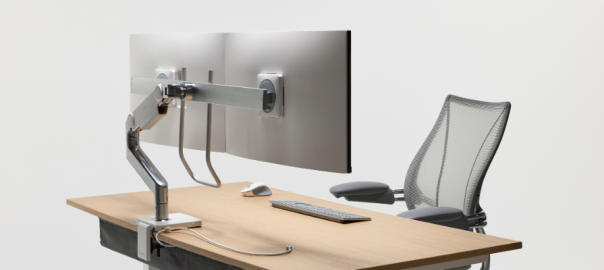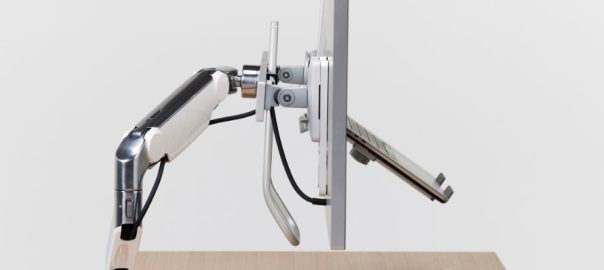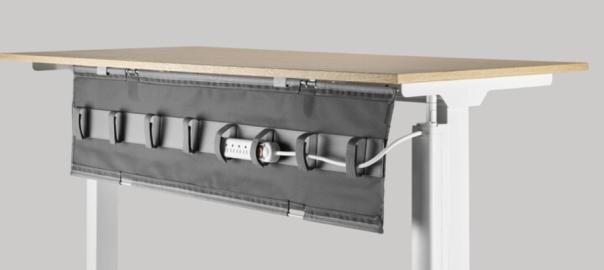Most of us spend hours in front of a desk, whether at work or at home, due to today’s sedentary lifestyle. Extended periods of sitting can cause a number of postural issues, such as poor blood circulation, rigid neck muscles, and back pain. To avoid these problems, however, the correct furnishings can make a big impact.
Various science-backed proofs have linked health problems like a stiff back, disturbed sleep, and general fatigue to – none other than your office chair. Termed as work-related musculoskeletal disorders (WSMD), it is often seen in office employees chained to their workstations for prolonged periods.
If you’re one of them, we suggest understanding the differences between ergonomic and regular chairs – and investing in the correct seating solution sooner rather than later.
What Is an Ergonomic Chair?
Ergonomic chairs support your body’s natural posture and movements to boost comfort and productivity while reducing the risk of musculoskeletal problems. Built with the principles of ergonomics in mind, this cutting-edge furniture provides optimal support and comfort during prolonged periods of sitting, often in office or desk-related settings.
The key features of an ergonomic chair include adjustable height, lumbar support, armrests, and a swivel base. These chairs are often recommended by healthcare professionals for individuals who spend a significant amount of time sitting.
Read More: Guide to Ergonomic Chairs: A Must-Read for Professionals
What Is a Regular Chair?
Conversely, a typical chair is any traditional chair that does not take ergonomic design into account. Regular chairs come in a variety of sizes, styles, and materials, but their aesthetics and cost are usually more important than their support and comfort. These chairs lack adjustable features, have fixed heights, and might not offer enough lumbar support. Although they could be okay for brief sitting sessions, using them for extended amounts of time can cause pain and posture issues.
Regular Chair Vs. Ergonomic Chair: Key Differences
The battle of ergonomic chair vs normal chair has been at the centre of conversations ever since awareness rose about the damage that regular office chairs were wrecking on people’s health. Wondering about the differences between ergonomic and regular chairs? Check out the features and benefits of ergonomic chairs and regular ones to make an informed decision
Duration and Frequency of Chair Usage: Intensive Work Hours Vs. Occasional Use
Like most people, if you sit at your desk for 7+ hours a day, five days a week, you are at a greater risk of suffering from a muscular injury. You will likely experience back pain, muscle tenderness, and aches – clear signs that your current setup is hurting you. That is when the divide between a regular and ergonomic chair becomes pronounced. Designed for optimal support, an ergonomic chair will keep fatigue at bay even when seated simultaneously. The result? No threat of long-term damage to your body – enjoy pain-free spinal and neck health.
Choosing ergo vs. standard chairs depends on the duration you plan to sit at your desk. Regular chairs are designed for occasional usage – if you sit at your desk for just an hour or so, you will not feel the need to invest in an ergonomic chair.
Read More: How Ergonomic Chairs Are Your Ultimate Solution to Back Pain
Lifestyle and Health Considerations: Existing Back or Neck Issues
If you have underlying issues about the neck or spine, they will most certainly flare up with long hours of incorrect seating. One of the biggest differences between ergonomic and regular chairs is that your regular chair is unforgiving – simply a large surface that handles your weight.
An ergonomic chair, on the other hand, is developed after years of design and research with top medical professionals. From the armrest to the lumbar support, it will cradle your neck and support your back – providing you with adequate comfort no matter how long you remain in the same position.
Another crucial difference between ergonomic and regular chairs is your end goal. While you may not currently suffer from any issues, your neck tissue is quite soft, and experiences strain relatively quickly. Over time, it becomes increasingly rigid – and with age, your neck and lower back region will start giving you real trouble.
People who don’t suffer from these issues usually take preventative measures promptly. One such measure is paying close attention to the effects of an ergonomic chair vs normal chair.
Read More: Ergonomic Hazards: Major Workplace Ergonomic Risk Factors and Effects
Comfort and Cushioning
Regular chairs may have little padding and may place more emphasis on appearance than comfort. Pressure points and pain can result from prolonged sitting on hard surfaces. whereas Chairs with ergonomic designs prioritize comfort. They have premium cushioning materials to effectively distribute body weight and offer sufficient support, lowering the possibility of pain or pressure sores.
Adjustability and Customization
Regular chairs often have fixed heights and few ways to adjust. This can be an issue because persons differ in terms of size and shape, necessitating personalized support to ensure maximum comfort. On the other hand, Ergonomic chairs are chairs that are incredibly adjustable, enabling you to customize the chair to meet your unique requirements. These chairs provide a plethora of modification possibilities, from height adjustments to movable armrests and backrests, guaranteeing a comfortable fit for a variety of body shapes.
Read More: Standing Desk vs Ergonomic Chair Dilemma! Let’s Find Your Ideal Setup
Budgetary Considerations: Cost vs. Long-term Benefits
When it comes to price, choosing between ergonomic and regular seating goes beyond looking at the current cost. Office chairs are usually available in all ranges, whereas ergonomic chairs start at a higher price point.
However, would choosing an inexpensive office chair create medical problems and raise huge expenses later? Would selecting a chair because of price only cost you your health? As previously mentioned, those sitting at a desk for long hours are likely to experience lower back, shoulders, and neck pain. What’s important to note here is that this damage to your body could be irreversible.
Choosing between ergonomic and regular seating balances your expectations with your budget. Buying an ergonomic chair doesn’t mean high price points. While slightly higher priced than your regular chairs, ergonomic chairs are available to fit every budget. Ergonomic products have varying support options, from basic backrest and swivel to lumbar support and armrest. Naturally, the price of the products varies depending upon the quality and specifications.
Features of a Good Ergonomic Chair
- Chair Dimensions: A good ergonomic chair is designed to align with anthropometric dimensions. From shoulder and elbow height to abdominal depth and popliteal height – no detail is too small when a reputed brand designs the dimensions of ergonomic products.
- Fabric and Cushioning: Dimensions aren’t everything – the material matters, too. The health, safety, and environmental (HSE) specifications state that the seat, backrest, and armrests should be well padded. Features, including breathable fabric, multi-stretch polyurethane (PU) cover, and dampness regulation, are additional factors you must consider before settling on an ergonomic chair.
- Degree of Adjustability: From seat height to armrest, every ergonomic chair offers varying degrees of adjustments you can make. In the case of regular chairs, you can, at best, alter the seat height – but beyond that, there’s little you can do. You’re forced to settle for hours of discomfort with little things that cannot be changed and add up to create a considerable inconvenience. On the other hand, ergonomic chairs are all about customization; don’t you like an element? Change it right away!
Conclusion
To conclude, musculoskeletal dysfunction, such as a stiff back, disturbed sleep, and general fatigue, is prevalent among office employees tethered to their chairs for extended periods. Ergonomic chairs have emerged as the perfect solution to this growing problem. Designed to prevent neuromuscular strain, they are necessary to survive long working hours easily. Choosing between ergonomic and regular seating is an investment in well-being, with health as an invaluable asset.

